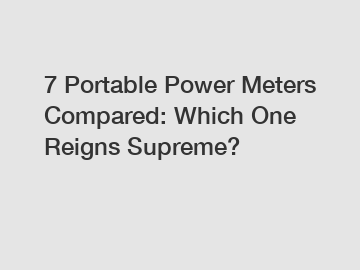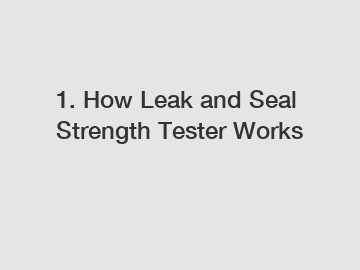Keeping the flow of oil and gas in pipelines is a monumental task and requires several reliable pieces of equipment. Gas valves are one of these crucial components. Without gas valves, the oil and gas industry could not ensure that crude oil, refined gas, natural gas, and other materials get to their destination. Learn the basics of valves, including seven common types used within the oil and gas industry, to better understand what is required for the smooth and safe flow of materials.
View Details
What is a Gas Valve?
A gas valve is a device used to regulate the flow of oil and gas. Opening or closing an aperture controls the amount of liquids and gases allowed through pipes. The valve controls the flow of fluids by stopping and starting, adjusting the amounts, controlling the direction, regulating pressure, or relieving pressure.
No two environments are the same. Some are highly corrosive. At the same time, others function under constant high pressure. Because of these variants, many different types of valves have been developed over the decades. Each type of valve has its own advantages and disadvantages. Successful operation and application require understanding the different types and uses within the gas and oil industry.
Types of Gas Valves and How They Are Used
There are several types of gas valves because of the different environments in which they are used. Below is a breakdown of seven kinds commonly used in the oil and gas industry.
1. Gate Valves
The gate valve may be the most commonly used in the industry. It uses a gate system to open or close a pipeline entirely. This is an excellent choice if the flow rate needs to be controlled and maintained. When the actuator completely opens the valve, the channel is unobstructed, allowing even slurry fluids like crude oil to flow easier. While it is not an ideal candidate if throttling is required in an application, there is not a noticeable pressure drop when this valve is used.
2. Globe Valves
When pressure control is necessary, the globe valve is frequently chosen. It is also often used for open and close operations. The valve plug sits vertically raised and lowered by the actuator as needed. They tend to create a more significant pressure drop than other valve types because of the S-shaped passageway within them. They are a good choice for flow regulation and throttling functions.
3. Check Valves
Gas refineries find check valves extremely helpful as the device opens under pressure and does not allow backflow of fluid or material. Because of the restricted backflow, cross-contamination of the product is prevented. That is, different materials can use the same pipeline. There is no need for an actuator as required in other valve types. However, it does need precise installation to ensure the response to fluid pressure occurs as required.
4. Plug Valves
The plug valve comprises a plug-shaped disc with a horizontal passageway bored through it. When the linear valve is open, fluid will move through the hole. Turning the actuator 90 degrees from the open position blocks any flow through the pipeline. This valve is not suggested for throttling functions but is ideal for unrefined oil products as found in biogas production.
See Plug Valves from Norgas Controls
5. Ball Valves
Ball valves are rotary valves that give pipelines fast shut-offs where tight sealing is often required. They are best suited for operation under fully open or fully closed positions as they do not offer reasonable regulation control or throttle functions. This type of valve comes in many different styles, which provides options within the industry. For example, a floating ball valve works better in low-to-medium pressure pipelines, and trunnion ball valves can handle high-pressure conditions. These are easy to repair, offer solid sealing, and provide quick shut-offs.
With competitive price and timely delivery, ABYDA sincerely hope to be your supplier and partner.
Additional resources:Are LPG Non Return Valves a safety hazard?
Which Laboratory Hot Tack Tester is best?What Are The Features And Specifications of The Multihead Weigher?How to Measure Phase Noise by Spectrum AnalyzerThe Motor and Propeller Test Kit: Components and FeaturesHow to Maximize Spectrum Analyzer Low Frequency?Unleashing the Power of High-Speed Logic AnalyzersSee Ball Valves from Norgas Controls
6. Butterfly Valves
These valves are simple in their construction, are lightweight, and compact. They use a disc-type element held by a rod to regulate flow. They can handle high-pressure pipelines and allow easy flow of materials. When they are closed, they shut tightly. Often, these are used in pipes with large diameters and where a gate valve is not applicable.
7. Slam-shut Valves
These valves provide additional safety of equipment either upstream or downstream from them. This type of valve may be found immediately before a regulator and is designed to remain open until a significant pressure change is detected. It then immediately shuts off the flow and must be reopened manually. They are sometimes referred to as relief and safety valves and are vital to the oil and gas industry in avoiding accidents and injury.
See Slam-shut valves from Norgas Controls
How to Choose the Right Valve for Your Application
Because gas valves come in many different types and provide various functionalities, choosing the best one may be challenging. It is helpful to consider the primary function under which it will be used. Does the environment involve much pressure? Is there a need for additional safety measures provided by a slam-shut valve? Can the actuator be automated, or does it require only manual movement?
Additionally, consider the type of environment where the valve will need to function. By asking questions and taking the working environment into account, it is feasible to determine the best valve for the process at hand. The answers will indicate the type of materials best suited for the function.
For more than 30 years, Norgas Controls has provided the Canadian gas industry with quality valves, including slam-shut valves, gas shut-off ball valves, and gas plug valves. Contact us anytime for more information about our gas valves or any other product we carry. Our team is friendly and knowledgeable, standing ready to answer your questions and help obtain the best equipment for your project.
Contact us at 1-888-GAS-REGS (427-) or online to learn more about Norgas&#; Gas Valves today.












Comments
All Comments ( 0 )